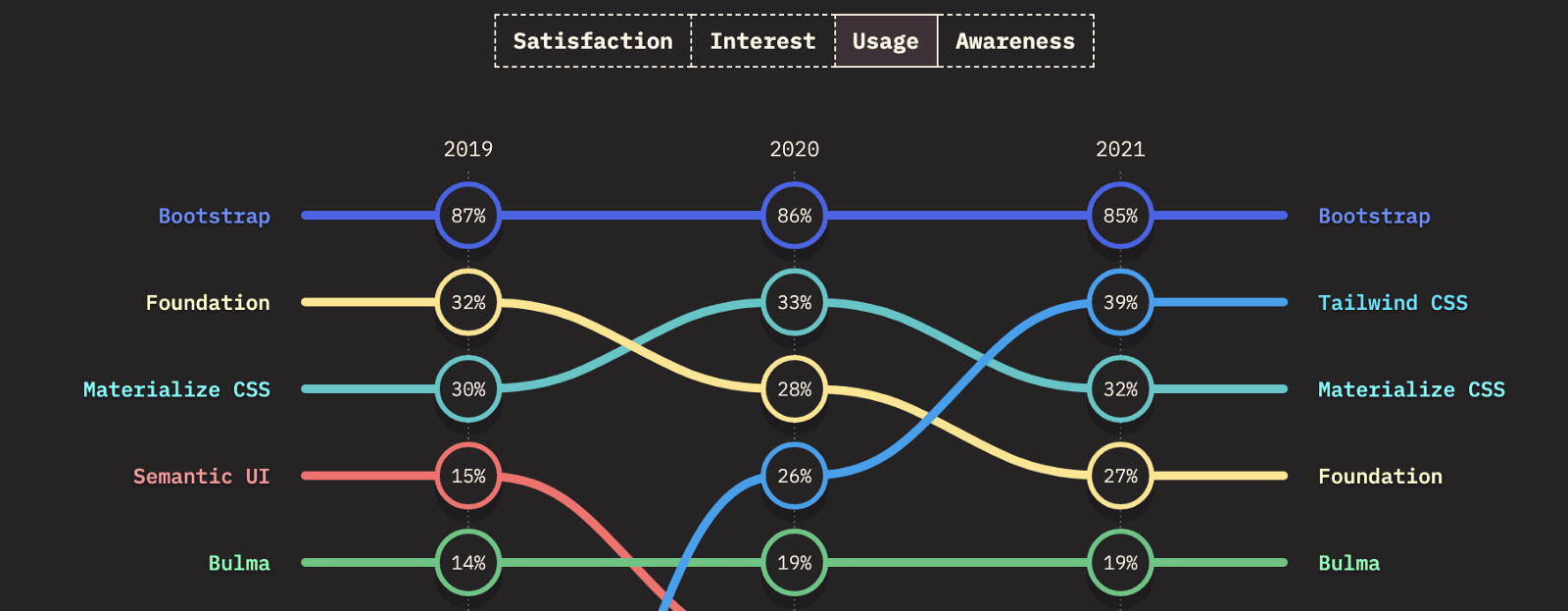Blitz News Digest
Stay updated with the latest trends and insights.
Frameworks That Make CSS Feel Like Magic
Discover CSS frameworks that transform your styling experience into sheer magic—unleash creativity and elevate your web designs today!
Top 5 CSS Frameworks That Transform Your Design Workflow
In the rapidly evolving world of web development, choosing the right tools can significantly enhance your productivity and efficiency. CSS frameworks provide developers with pre-defined styles and components, streamlining the design process while ensuring consistency. In this article, we explore the top 5 CSS frameworks that can transform your design workflow and help you deliver beautiful, responsive websites faster than ever.
- Bootstrap: Known for its grid system and responsive utilities, Bootstrap simplifies the layout process. The framework includes a plethora of pre-designed components, which allow for rapid prototyping.
- Foundation: Developed by ZURB, Foundation is highly customizable and modular, making it suitable for advanced developers. It also prioritizes accessibility, ensuring your designs are usable for everyone.
- Bulma: This modern CSS framework is based on Flexbox, making it easy to create fluid and flexible layouts. Bulma's simplicity and clean design make it an attractive choice for many developers.
- Tailwind CSS: Unlike traditional frameworks, Tailwind offers utility-first classes that promote rapid design customizations. This approach allows for greater creativity in building unique user interfaces.
- Semantic UI: It utilizes human-friendly HTML to create responsive layouts that align with natural language principles. This framework emphasizes readability and makes it easier for developers to maintain their code.

How CSS Frameworks Can Streamline Your Web Development Process
In today's fast-paced web development landscape, utilizing CSS frameworks can significantly streamline your process by providing you with a robust foundation of pre-built styles and components. These frameworks, such as Bootstrap, Tailwind CSS, and Foundation, offer a responsive grid system, customizable UI components, and various utilities that aid in building visually appealing websites efficiently. By leveraging these tools, developers can focus on creating unique features without getting bogged down by repetitive style definitions or browser compatibility issues.
Another advantage of using CSS frameworks is enhanced collaboration among team members. Frameworks often come with a consistent design system, making it easier for multiple developers to work on the same project without worrying about conflicting styles. Additionally, many frameworks offer extensive documentation and community support, which can help developers quickly troubleshoot issues and implement best practices. Overall, by adopting a CSS framework, web developers can save time, enhance productivity, and deliver high-quality websites that meet user expectations.
What Makes CSS Frameworks Feel Like Magic?
When it comes to web development, CSS frameworks are often touted for their ability to streamline the design process, making it feel almost like magic. These frameworks come pre-packed with a wealth of features, including responsive grids, flexible components, and a variety of built-in styles that can be effortlessly combined. This eliminates the need to start from scratch, allowing developers to focus more on functionality and user experience. With a few simple classes added to HTML elements, developers can achieve complex layouts and designs that would otherwise require extensive coding knowledge.
Moreover, the collaborative nature of CSS frameworks enhances their mystique. By adhering to established conventions and standards, teams can jump into projects with a shared understanding, reducing the learning curve associated with unique styles. This not only promotes consistency across multiple projects but also encourages creativity by providing a foundation upon which custom styles can be layered. As developers become more familiar with these frameworks, they begin to appreciate the underlying principles that make their workflows faster and more efficient, truly feeling the magic of modern web design.